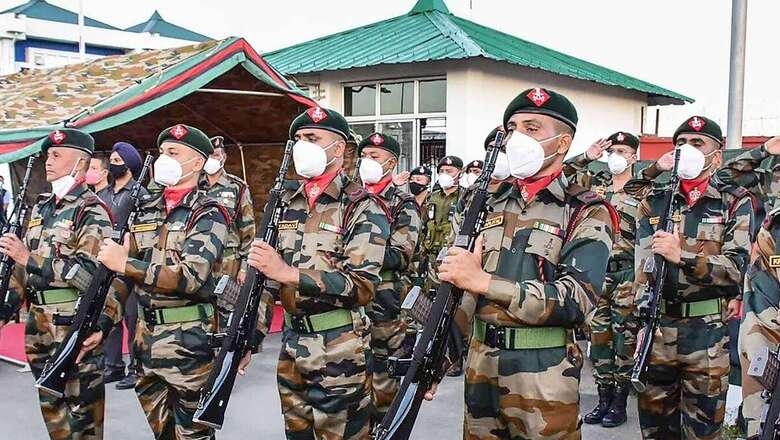
views
Of late, there is a growing perception that anti-state mechanisms — as they address themselves to the myriad forms of armed conflict —would take over insurgent behaviour and take on a warlord mode. Such discernment has been growing after the manner in which insurgencies in Manipur and Nagaland have come into unholy agreements with the Myanmar army after the military takeover of February 1, 2021.
Most views of conflict against the state are the ones which are either state-engineered or the ones which have found their way into currency as a result of direct anti-state propaganda — attesting to the fact that almost all definitions of such manner of conflict are governed in a priori fashion. If the perception of such matters is to be examined with a measure of rigour, then it will have to be one which is a posteriori in outlook.
Most anti-state actors base their characters — or at least the ones which they seek to display — on theoretical elegance. Therefore, when an anti-state organization essays its birth, it will invariably take into account the sartorial nature of its exterior. Indeed, most such organisations — at least in the Indian sub-continent — have sought to decorate their cloaks with embellishments, which might have nothing to do with their inherent character.
Public posturing is perhaps the most important aspect of an anti-state appraisal — they are aimed at the people watching. To that end, most such mechanisms, whether they possess the cut and thrust of a revolutionary organisation or not, introduce themselves to their audience with a period of demonstration. Such periods are invariably followed up with phases of confrontation, retribution and consolidation.
However, showcasing apart, every anti-state actor, whether or not they possess an agenda which seeks to replace the existing state apparatus with another and thereby adopt praxis as an important coordinate, distinguishes itself by the methodology it adopts. Indeed, even its goal orientation may be so geared that ends (however ideologically suited) justify the means. It is only during the phase, which follows the period of consolidation, that the true character of a campaign can achieve proper registration. It was witnessed to be the case when the People’s Liberation Army (PLA), perhaps at the instance of the People’s Republic of China, assassinated a Commanding Officer of the Assam Rifles along with his family in 2021.
A PIOOM survey of yesteryear lists Assam, Kashmir and Bihar in India among others as high intensity conflict (HIC). Although the survey has excluded Albania from the list of 17 HIC which have all been termed as insurgencies because “it appears that their conflict in this period was one of the armed criminal gangs rather than politically motivated rebellion”, the fact of the matter is that a proper study does not seem to have been made of the conflict situation in Assam.
Among contemporary insurgencies, conventional warfare “where an insurgency possesses the manpower and range of weaponry to enable them to resort to full-scale conventional military operations if and when the opportunity arises” is not as frequent as guerrilla warfare which has been characterised as “hypermobile war”. Indeed, writing about the guerrilla mode of warfare—conflicts in the Northeast of India could well claim to be representing ones such—Wilkinson writes: In the classic pattern, the guerrilla wages a hypermobile war. It is, one could say, the natural weapon of the strategically weaker side. Rather than risking the annihilation of his own forces in a full-scale battle with his more numerous and better-armed opponents, the guerrilla goes over to the tactical offensive, waging what Taber has called ‘the war of the flea’ using methods, time and places of the guerrilla’s choice and constantly trying to benefit from the guerrilla’s major tactical advantage—the element of surprise.
Writing about Warlordism in Kashmir, Alexander Evans speaks of the transnational aspects, or what he terms the presence of guest militants and their state backers, as also about the failure of the state which has (as a result of a weaponising race between India and Pakistan) “encouraged low-intensity conflict by their very nature, and that in areas with unrepresentative political institutions weak warlordism is a likely consequence.”
Can a parallel for Kashmir be drawn with the Northeast? Is there a case by which the provenance of not only the Valley Based Insurgent Groups of Manipur but the ones in Central India (LWE) as well can be examined in the light of the above, especially in terms of what has been called the “warlord” authority?
The military leadership in Manipur has understood this imperative as has the higher headquarters in Rangapahar and Kolkata. A wargaming exercise would validate the mechanism for a finale. But it would be worth the while for New Delhi to institute a task force to study this phenomenon. The result could well herald interesting hues as the nation braces itself to face an election year in 2024.
Jaideep Saikia is a conflict theorist and bestselling author. Views expressed are personal.
Read all the Latest Opinions here




















Comments
0 comment